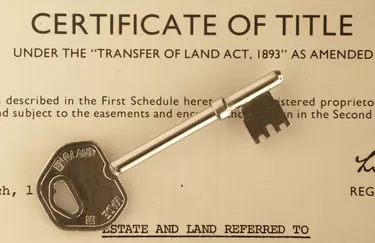
Common reasons for a transfer of land include the sale of property, a death of the owner or a divorce. A deed is the legal document used to transfer the ownership of property. In the state of Alabama, transferring property requires the preparation of a new deed that fulfills all of the legal requirements in Alabama for transferring land, such as possessing a notary's signature and stamp. Since transferring land is a legal process, it is a good idea to use a professional when preparing the documents.
Step 1
Gather the information from both the grantor and grantee of the property. Alabama state law requires the legal name and address to be used when transferring land. Also, obtain a copy of the deed to the land from the current landowner. This contains the property's legal description and lists the grantor as the current owner.
Video of the Day
Step 2
Contact an attorney who handles real estate transfers to compose a deed to transfer land in the state of Alabama. Provide the previous deed as a guide for the attorney when composing the deed. It gives the legal description, mineral rights and exclusions to the property.
Step 3
Sign and date the deed. The state of Alabama requires that a deed be notarized and stamped as well. The attorney will provide a notary when the deed is completed.
Step 4
Take the original copy of the deed to the county courthouse and have it recorded in the deed book. It then becomes a permanent record in the state of Alabama. This protects you from future claims or judgments on the title.
Tip
Determine if the property conveyance type should be a warranty deed or a quitclaim deed with the guidance of the attorney. A warranty deed provides the grantee with the guarantee that the property is owned by the grantee and has no liens. A quitclaim deed, on the other hand, offers no warranty and simply transfers the property between owners.
Video of the Day